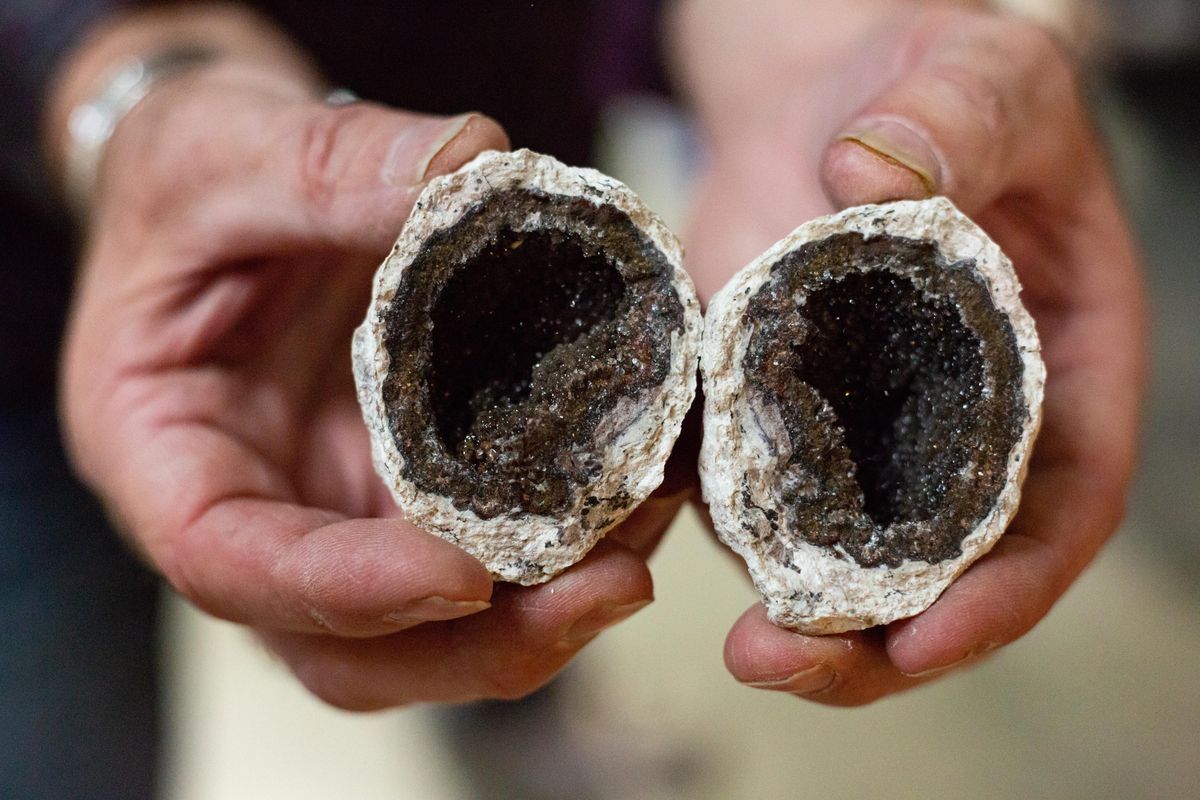The humble rock is elevated at annual Gem, Jewelry and Mineral show

With the help of water and two rapidly spinning grinders, Jeff Hanley reduced a small cube of jade into an egg.
Hanley said creating jewelry like the jade egg, part of which had been reduced to a watery paste in the pan below, is giving a natural process a little push.
“It’s just erosion, sped up,” he said.
Like many of the artists, collectors and geology enthusiasts gathered at the Spokane Fair and Expo Center for the 60th annual Gem, Jewelry and Mineral Show on Sunday, Hanley said he sees more than just a rock when he looks at a gemstone.
“I borrow from Michelangelo,” Hanley said. “He saw an angel in a rock and released it. Well, I saw an egg and I released it.”
The former mechanic said he’s been shaping gemstones and rocks as a lapidist for 35 years and sells many of his rocks and gems at his business, Gold E Rocks.
Jade, however, is not his specialty. Hanley said he focuses on shaping Idaho star garnets, a deep purple and black stone with between four or six rays found only in Idaho and India. At his booth at the show, Hanley had a handful of garnets he had perfected.
Brent Stewart, who runs Stewart’s Gem Shop in Boise along with his father, said Idaho star garnets cost about $50 a carat. Many of the gems on display at his booth at the rock and mineral show were more than 20 carats. The star garnet is Idaho’s state gem, and is found mostly in Latah and Benewah counties in Idaho.
Stewart said his grandfather and founder of the family’s gem shop, Dudley Stewart, pioneered a way to cut them and introduced them to the market.
Hanley said large Idaho star garnets are much harder to find in Idaho than they once were.
Ryan Hendershot, a member of the Spokane Rock Rollers club and amateur lapidist said many enthusiasts go on rock tours across the Pacific Northwest and find the gems or stones themselves.
“We go a lot of places people don’t go because of what we’re looking for,” he said.
He said he’s found several geodes in Oregon, commonly called thunder eggs. He said finding the rocks is the first step for many artists.
Hendershot said he has a newborn baby and doesn’t have as much time as he used to for rock hunting, but he’s been following artists like Hanley for years.

At the show, families could use pipe cutters to open geodes, and search for rocks in small treasure hunts. Attendees could also bring rocks to the Eastern Washington University’s geology club’s booth, which had information about how to identify different types of rocks. The club also had a collection of fossils on display.
Sunday was the last day of the show, which usually boasts more than 4,000 attendees and 50 booths over a three-day weekend, but Mike Shaw, the rock show’s chairman, said the club hosts educational and skill classes all year. He said the club teaches silversmithing, faceting and other jewelry classes. The club also leads rock hunting tours around the Pacific Northwest.